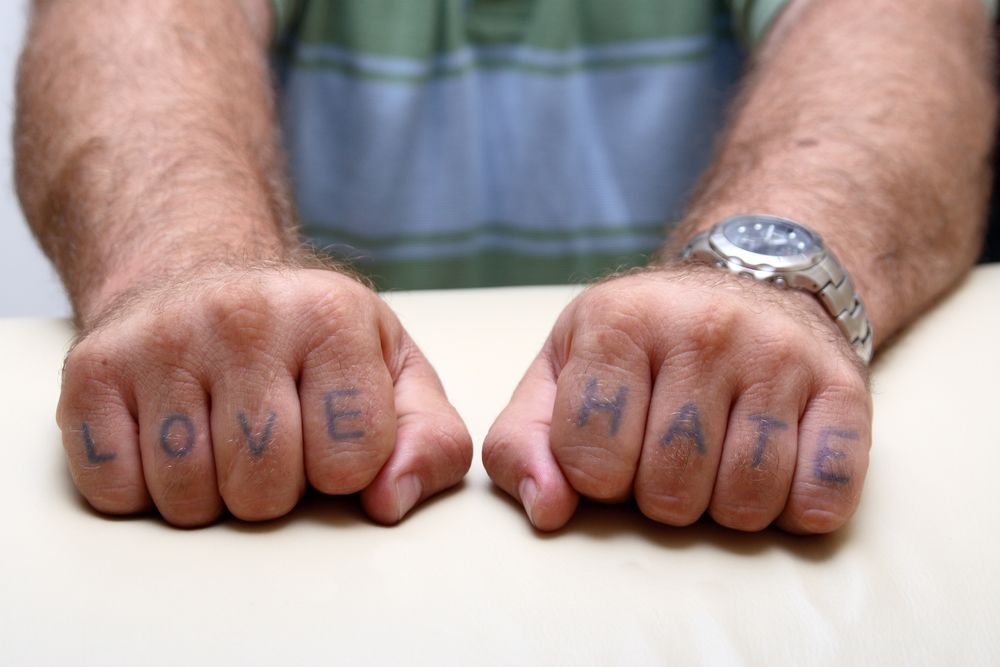- Tattoos are becoming more common in the United States. Over 40% of people between the ages of 18 and 29 are tattooed.
- While tattoos have been around for over 5,000 years, effective laser removal techniques only began to surface in the 1960s.
- Although laser removal techniques are by far the most common, alternative options like tattoo removal creams are gaining in popularity, primarily because of their low price.
Surveys have shown that nearly one in five people with a tattoo regrets their ink. This leaves a growing number of people each year looking to erase their “permanent” ink.
“In my practice, the most common reason people come see me to remove a tattoo is because it contains an ex-lover’s name,” says Dr. Khalil Khatri, a dermatologist in Chelmsford, MA. “Other common reasons are because it’s messed up, it contains the names of lost loved ones, or people discover they have an allergic reaction to tattoo ink.”
Most people looking to remove a tattoo first consider laser removal. However, these treatments come with several drawbacks.
Laser removal is time consuming as it requires numerous visits to a specialist’s office, but for most the biggest hurdle is the price tag. Depending on several factors, like the size of the tattoo, laser removal starts at $1,000 and can climb to as high as $10,000.
The restrictive nature of laser removal leads many to search for a more affordable option — hence the increasing popularity of tattoo removal creams. We set out to find out how effective these products actually are.
A Dangerous Sales Pitch
Tattoo removal creams claim to provide an effective alternative to laser removal by offering an affordable home treatment. Following the basic application instructions provided with the cream, tattoos are supposed to fade away over the course of multiple applications.
If this sounds too good to be true, that’s because it is. At best, these tattoo removal creams simply speed up the natural fading process, which doesn’t lead to blank skin, but rather to distorted and discolored tattoos.
At worst, these creams lead to scarring and skin damage.
Why Isn’t Tattoo Removal Cream Recommended?
In order to understand why tattoo removal creams don’t produce desirable results, it’s important to first understand how tattoos work.
“Tattoo artists use special techniques and ink that they place in the second layer of skin,” says Khatri. “The ink particles are engulfed by immune cells, called macrophages.”
Some of the smaller ink particles are carried by macrophages out of the area to the lymph nodes for disposal. Other macrophages are trapped in place with the ink, making the tattoo visible. Over the course of a lifetime or until otherwise erased, macrophages will remove any smaller ink particles, which gradually leads to natural fading and distortion.
As the body’s first line of defense, human skin is particularly good at keeping foreign objects from passing through it. While this is to our benefit in most cases, it makes tattoo removal particularly difficult.
In order to remove a tattoo, the ink particles sitting below the top layer of skin need to be reached. This isn’t a problem for lasers, but creams are unable to penetrate the top layer of skin, leaving ink particles out of their reach.
“The topical treatments will only work if they penetrate to the level of the ink in the skin,” says Khatri. “For that, the top layer of skin must be removed (at least) partially for topical treatments to be effective.”
Bleaching the Skin with Acid
There are two common types of tattoo removal creams, both with their own set of risks. The key ingredients in these options are hydroquinone and trichloroacetic acid.
Hydroquinone is typically used in skin bleaching products. Although it can effectively lighten skin, hydroquinone is essentially useless when used for tattoo removal because the creams are unable to penetrate the top layer of skin to reach the ink particles, meaning that your skin may lighten, but the ink will remain in place. Visually, this can result in a lighter tattoo, but any further results would be minimal.
Before modern laser techniques were developed, trichloroacetic acid removal was a common option. Creams that utilize trichloroacetic acid attempt to reach ink particles by chemically burning away the top layer of skin. Once the top layer is removed, ink particles are displaced, which leads to fading.
However, trichloroacetic acid creams have a high chance of causing scarring and often result in uneven tattoo fading. While somewhat effective, few dermatologists would recommend using this method because of the risks associated with it.
Other creams purportedly work by attracting additional macrophages to the tattooed area. At best these speed up the natural fading process, but will not lead to blank skin.
“Topical treatments only make tattoos a little lighter,” says Khatri. This is far from the complete removal that many expect, but creams can meet the lower expectation of making tattoos less prominent.
By comparison, modern Picosecond Laser removal works by breaking larger ink particles into smaller ones that macrophages are able to manage. After a series of treatments, tattoos are almost entirely removed.
What Results Can Tattoo Removal Cream Provide?
With so many tattoo removal creams on the market, it’s hard to imagine that they’re all ineffective. Creams do have some benefits, only they’re far fewer than many expect and come with their fair share of risks.
Some suggest that tattoo removal creams should be used prior to laser removal. This allegedly reduces the number of laser treatment sessions that will be required. While opinions vary, the risks associated with using these creams prior to laser treatment far outweigh any of the minimal benefits they might offer.
Will Tattoo Removal Creams Improve?
While most of the currently available creams leave much to be desired, work is underway on the next generation of tattoo removal creams.
The top contender for an alternative to the current topical creams is Cipher Pharmaceuticals. In 2016 the company purchased the rights to a cream developed by Dalhousie University. Called “Bisphosphonate Liposomal Tattoo Removal,” theoretically this cream works by giving macrophages the ability to transport larger ink particles. While little has been heard from the project in recent months, it may one day provide a viable topical tattoo removal option.
For his part, Dr. Khatri does not believe these creams are the future of tattoo removal. Innovations in laser technology have only served to cement the technique as the best available, and this will likely continue to be the case moving forward.
Other Affordable Options
Depending on its location, some will opt for a cover-up tattoo. When possible, a tattoo artist can simply create a new tattoo over the old one. This could be a solid black patch of ink or a new design that is at least the same size as the tattoo being covered. This option will not, of course, appeal to those looking for blank skin.
Another option is acid tattoo removal. Typically performed by tattoo artists, a tattoo gun injects an acid into the skin. Upon reaching the second layer of skin, the injected acid dissolves the ink. This method comes with its own drawbacks, however, such as altering the texture of skin.
Even with these options and advances in laser removal, it is still much more difficult to remove a tattoo than to get one. It is important to remember the old mantra: “think before you ink.”









